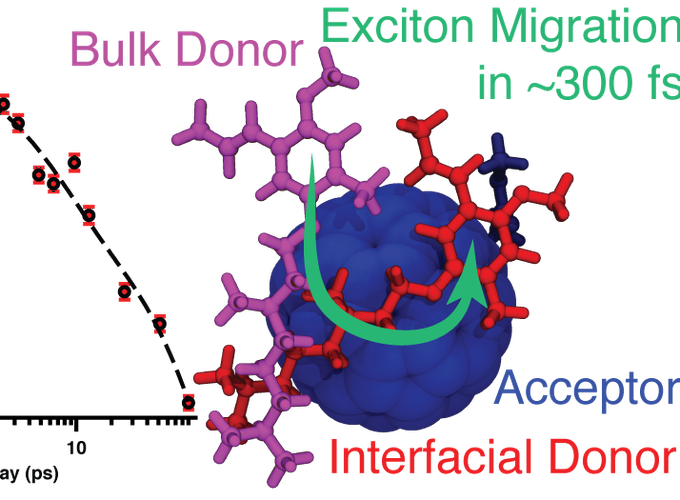

Exciton mobility is crucial to organic photovoltaic (OPV) efficiency, but accurate, quantitative measures and therefore precise understanding of this process are currently lacking. Here, we exploit the unique capabilities of femtosecond stimulated Raman spectroscopy (FSRS) to disentangle the signatures of the bulk and interfacial donor response in a bulk heterojunction composed of poly[2-methoxy-5-(3′,7′-dimethyloctyloxy)-1,4-phenylenevinylene](MDMO-PPV) and phenyl-C61-butyric acid methyl ester (PCBM). Surprisingly, we find that donor excitons are very mobile for the first ∼300 fs following excitation (before thermalization) even though their overall lifetime is significantly longer (170 ps). A sharp decrease in mobility occurs after the system relaxes out of the Franck–Condon (FC) region. From this observation we predict that any polymer lacking a significant resonance Raman effect and fluorescence Stokes shift, indicating slow FC relaxation and small reorganization energy, will make an efficient OPV material.